PERENNIALS > PEONIES
Chris is a gardening writer and nature enthusiast. He graduated from Oxford Brookes University in 2022 with an MA in Psychology. Chris works with the Leeds Green Action Society, helping their food cooperative by growing various fruit and vegetables on their two allotments in Hyde Park, Leeds.
Reviewed By COLIN SKELLY

Colin is a Horticulturist and Horticultural Consultant with experience in a range of practical and managerial roles across heritage, commercial and public horticulture. He holds the Royal Horticultural Society’s Master of Horticulture award and has a particular interest in horticultural ecology and naturalistic planting for habitat and climate resilience.
Contributions From KOEN HURTEKANT

The founder of The Peony Society, Koen is also the owner of a cut flower peony nursery based in Belgium. He hybridises and breeds his own peonies that are now recognised by the American Peony Society and by gardeners all over the world.

Not only is she the President of the Pacific Northwest Peony Society, but Carol is also the owner of her own plant nursery, Adelman Peony Gardens. Having been awarded ‘Best of Show’ at 9 of the last 15 American Peony Society shows, Carol has also had a book published about peonies.

With 15 years of experience growing peony flowers, Kate is the Owner of the specialist nursery Little Budds Peony Farm. Kate specialises in the cut flower market and is known for her very large blooms.
IN THIS GUIDE
Peonies, also known as “Pentecost Roses”, are recognisable by their gorgeous fluffy blooms which come in varying shades of colours, shapes, and sizes.
Popular among brides for bouquets and table decorations, these flowers are effortlessly romantic and often have a wonderful fragrance.
Peonies are perfect for border displays and though they are slow-growing, these popular plants are absolutely worth the wait.
In these guides, we collaborate with THREE incredible Peony specialists:
- Koen Hurtekant – Founder of The Peony Society.
- Carol Adelman – President of the Pacific Northwest Peony Society and Owner of the plant nursery Adelman Peony Gardens.
- Kate Blacker – Owner of the specialist nursery Little Budds Peony Farm.
“They are beautiful, live a long life, and don’t take much care,” says Carol.
“There’s also such a range of peony forms and colours!”
Overview
| Botanical Name | Paeonia |
| Common Name(s) | Peonies, Polish Roses |
| Plant Type | Perennial Flower |
| Native Area | Asia, Europe, North America |
| Hardiness Rating | H6 |
| Foliage | Large leaves often divided into multiple leaflets |
| Flowers | Showy, large flowers in a range of colours |
| When To Sow | May, June, October |
| Flowering Months | April, May, June |
Sunlight
Preferred
Full Sun / Partial Shade
Exposure
Sheltered
Size
Height
0.5 – 1M
Spread
0.5 – 1M
Bloom Time
April – June
Soil
Preferred
Most Soil Types
Moisture
Moist but well-drained
pH
Any
Peonies are long-lived perennial plants meaning they will come back year after year. In fact, some peonies have been known to thrive for over a hundred years.
“What’s not to love about a peony – the big blousy girls sell themselves!” says Kate.
“The cutting season is six weeks long, which means we can easily work around this crop.”
Blossoming from late spring to early summer their flamboyant flowers come in many shades including white, pink, coral, maroon, red and yellow – to name but a few.
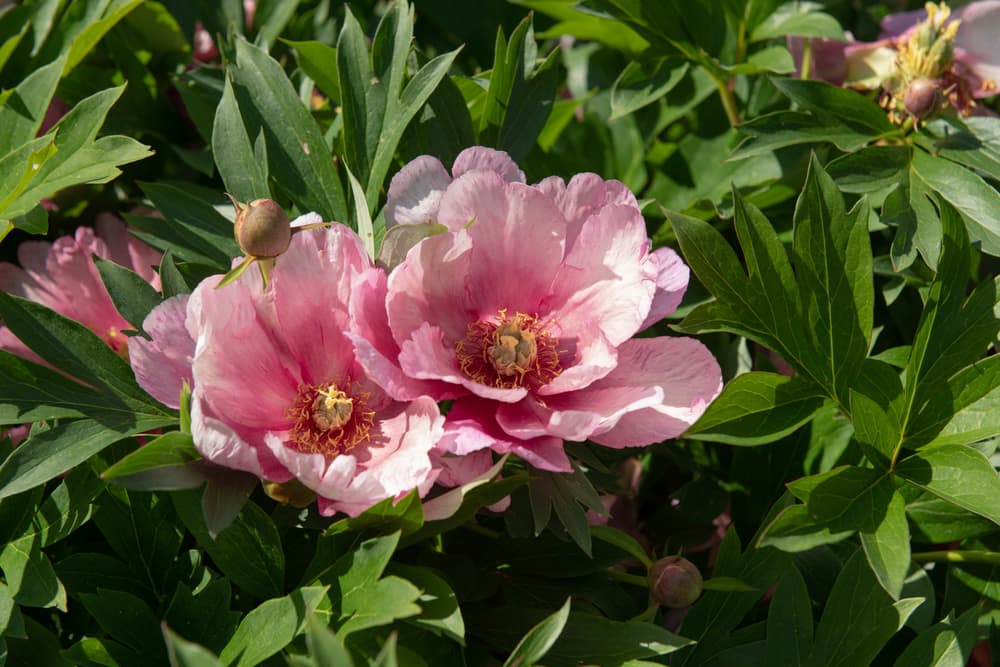
There are three common types of peonies: tree peonies, which are tall and woody; herbaceous peonies which will die back each winter; and intersectional peonies which are hybrids crossed between the two.
“Nowadays, the intersectional cross between the shrubby and herbaceous groups is easily obtainable for every gardener,” says Koen.
“This cross offers the flowers, leaflets and fragrance of the shrubby group, but they die back yearly like the herbaceous types.”
Though not all types are scented, as with the colour, peonies also have a wide range of fragrances, from soft and sweet, to citrus, and even somewhat spicy.
Peony Types
The best way to choose your peony is by choosing which flower shape and colour you would like.
Peonies have four arrangements for their bowl-shaped blooms, so you have a choice of how simple or extravagant you want to go.
Single

This peony’s bloom is mostly cup-shaped with no more than one or two rows of large petals that curl inwards, surrounding its many yellow stamen.
Semi-Double
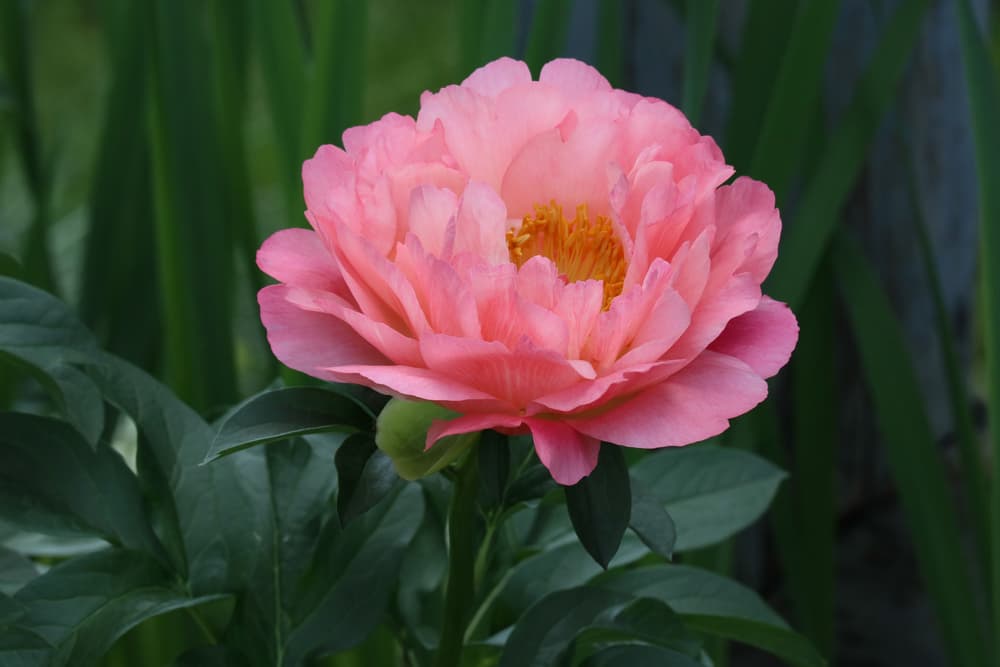
The semi-double peonies are close in appearance to the single peonies, but instead, have two to three inward-curving rows of petals.
Double

In double types the petals often overlap, and in their thin and sometimes-ruffled appearance, which is typically filled to the centre.
Koen remarks that stamens are usually absent or sometimes hidden between the petals.
Carpels are often gone, and sometimes smaller ones are hidden beneath the voluminous petals.
“From semi-double to full double there are some varieties that are ‘in-between’,” says Koen.
Anemone-Form

This type can have either single or semi-double-like blooms.
“The centre carpels are surrounded by transformed stamens,” remarks Koen.
“These transformed stamens no longer contain any pollen, which is the main difference with singles.
“Here the stamens are transformed into petal-like structures. If they are very small we call them ‘Japanese’-form flowers, if they are wide they are ‘anemone’-form, and if they are the same colour as the outer petals and fully transformed into normal petals you have a ‘bomb-double’.”
Peony Care
After you’ve planted your beautiful peonies, you will need to give them ongoing care to help them survive and thrive.
Watering
For the first year after planting and while they are establishing themselves, regular watering is key.

However, being such a deep-rooted plant, when fully established, regular and routine watering will not be necessary and you only need to focus on them in particularly dry weather.
“By far the most important factor in peony care is good drainage,” Koen states.
“Peonies cannot stand growing in places that remain too wet for a long period of time.”
Ensure the water can drain away freely in whatever spot you’ve planted in.
Feeding
“Peonies are rather hungry for nutrients, so regular fertilisation will be beneficial,” advises Koen.
Simply applying a general-purpose fertiliser each year in springtime will give your peonies the boost they need to flourish.
Follow the instructions on your chosen fertiliser.

We also recommend that you then add a layer of garden compost or manure, this will help preserve moisture and prevent weeds.
If using manure, take care to avoid covering the centre of the plant to prevent damage to the buds.
However, when using compost, Koen advises that you are fine to cover the whole plant.
Staking

Staking is optional and won’t be necessary for all peonies but for cultivars with large flower heads, using a stake to support them will prevent the stems from bending and breaking.
Deadheading
Deadheading should be done with secateurs after flowering, but it really depends on which type of peony you’re growing as to whether you’d want to let it go to seed.
“Almost all peonies are lactiflora,” says Koen.
“They don’t set seed because they are mostly doubles and those usually don’t have the carpels needed to make any seed.
“Hybrids can make seeds, it just depends on what variety you have.
“If you grow a single lactiflora you might usually expect many seeds.”
Regardless, deadheading spent flowers will prompt your plant to divert its energy from seed production to generating more blooms – so it’s a worthwhile activity for most gardeners.
Older Plant Care
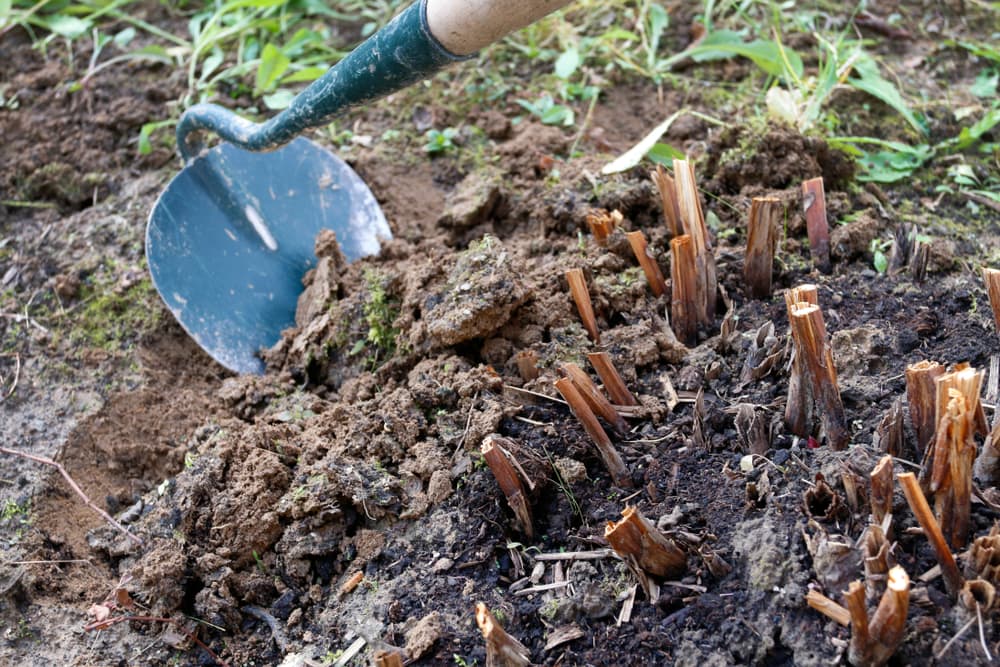
Peonies are long-lived plants, and a well-cared-for peony could easily outlive you!
With an older plant, if you find the flowering is less reliable then you can give it a new lease of life by lifting and dividing in late winter.
Propagation
Once your peonies are thriving you may want to share them with friends and family or plant a few more elsewhere in your garden.

Because peonies do not breed true, the best way to increase them is through division which should take place in late autumn.
Peonies that are grown from division will be identical in colour, shape and fragrance to their parent plant and you can expect them to begin flowering around two years after dividing.

Sharing the love of your peonies through propagation is relatively straightforward.
- Once uprooted, remove all foliage and lift the clump with a spade, leaving as many roots intact as possible.
- As carefully as you can, gently wash off the soil, exposing the roots and buds.
- Using a sharp knife or secateurs remove sections of the crown, leaving each section with a minimum of three dormant buds as well as some roots attached.
- Share with your friends and family, or choose the perfect spot in your garden and replant. The buds should be 2.5cm below soil level.
Common Problems
Being such a hardy plant, if conditions are right, peonies will rarely run into trouble.
That said there are a few things you may come across.
Botrytis
“Botrytis is the main disease of peonies,” says Carol.
“Botrytis can look like lettuce that has been too long in the refrigerator and it can make a sore at the base of the stem or cause the bud to turn black.
“If you see evidence of botrytis, remove the affected part and spray with any fungicide recommended for black spots on roses.
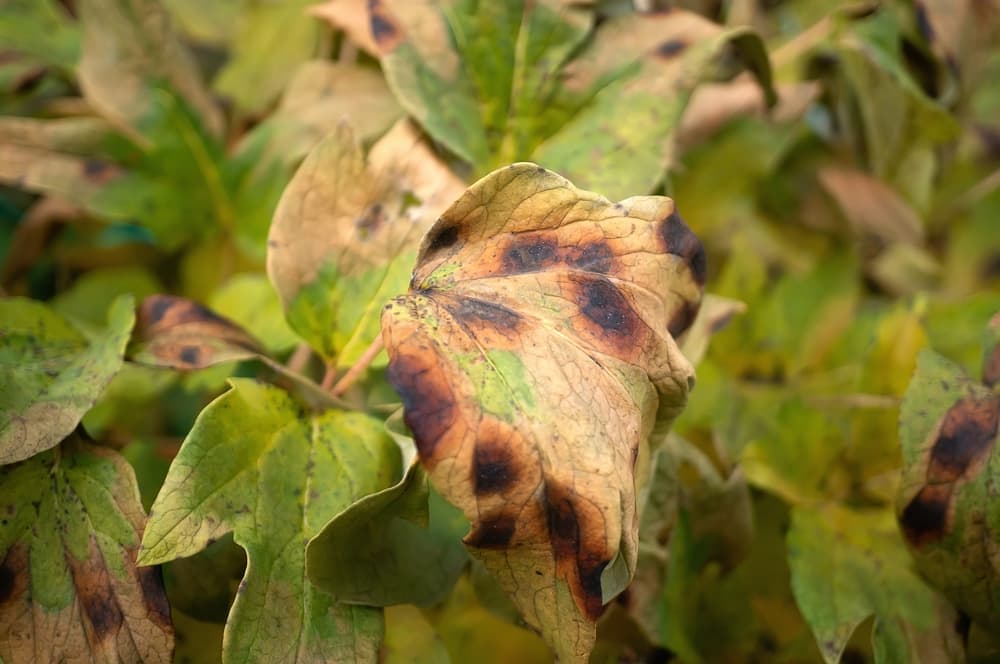
“In addition, you can cut the foliage to the ground in autumn and put the foliage in the garbage, not the compost.
“This way, if there were any botrytis spores on the plant, then they won’t be there to attack the plant as it comes out of the ground in the spring.”
To prevent this disease, Carol recommends that you should provide a spot for your peonies with good air circulation – allowing the foliage to dry after a rainfall.
Deep Planting & Shade
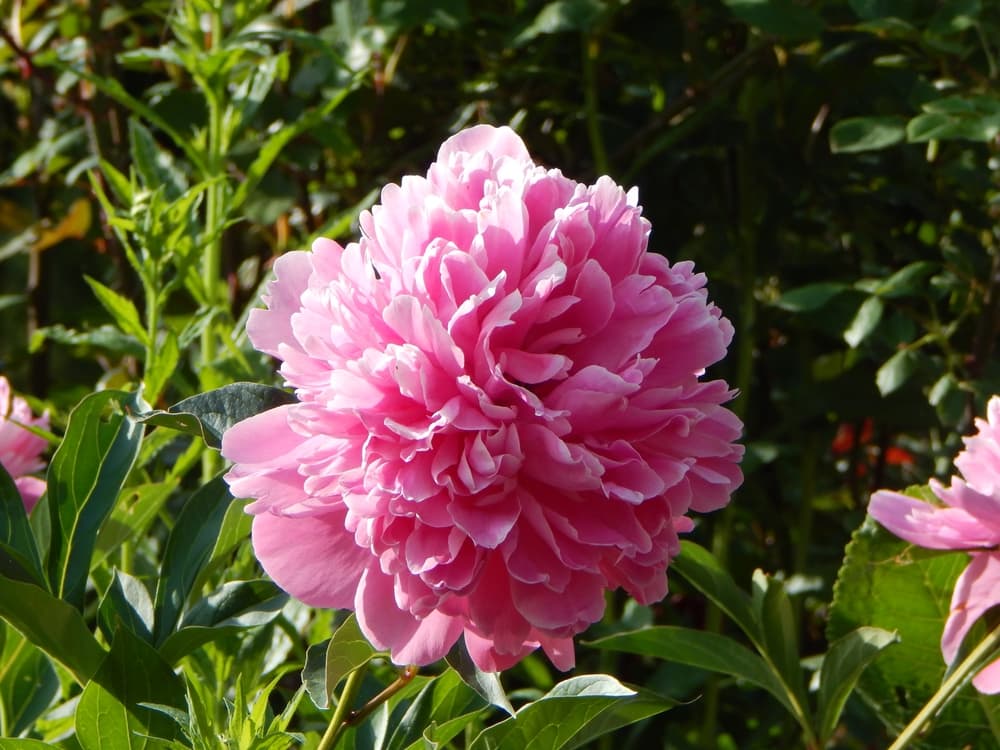
If planted too deep or in shade your peonies may not be able to produce flowers.
If this occurs then wait until autumn and then proceed to move your plant to a more suitable position and take care to plant them no deeper than 2.5cm.
“I have found that planting too deeply is the most common cause of peonies not flowering, particularly for recently planted peonies that have not yet flowered,” shares Master Horticulturist Colin Skelly.
“For an established peony that has stopped flowering, a division is the most likely restorative.”
This will ensure your peony has a chance to thrive but do be aware that once moved it may take up to two years for your peony to flower.
Prolonged Drought
Though hardy, if your peony experiences long periods of drought, this can cause poor flower bud growth and buds may not even open.
If a long dry spell occurs then mulch around the base of your plant and water regularly.

